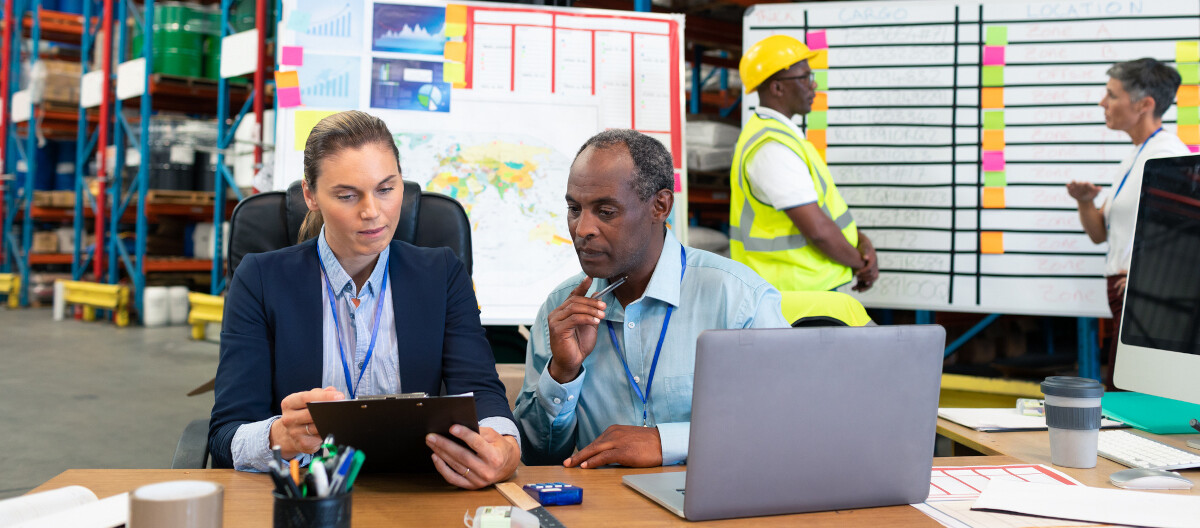What is a cyber-physical system?
Cyber-physical systems (CPS) are mechanical platforms managed by computer algorithms and closely connected both to the internet and their users. They consist of hardware, digital software and network elements which combine computing, communication and control capabilities with physical processes and components. Numerous industries, including manufacturing, transport, healthcare and energy, use these systems for intralogistics.
Real-time monitoring and control of physical processes often requires the integration of sensors, actuators and other devices into control systems and networks. This enables companies to streamline their processes and improve efficiency and reliability.
Examples of CPS include industrial control systems, smart grids and autonomous vehicles. These can be complex units which integrate several technologies and components. It’s important to have control options to monitor and understand the behaviour of these systems and identify any problems or bottlenecks that may occur. By implementing monitoring and analytics tools, companies can gain insight into their performance and behaviour, and take action to improve.
Cyber-physical systems: what are the advantages?
Implementing cyber-physical systems offers a number of benefits:
- Greater productivity and stability: cyber-physical systems can optimise processes and increase efficiency and reliability. For example, an industrial control system is able to monitor and control production processes in real time, helping to reduce waste.
- Increased safety: A cyber-physical system monitors and controls processes in real time, allowing risk reduction measures to be introduced at an early stage if need be. For example, the sensors and control systems in a CPS can protect an autonomous vehicle from collisions and other hazards.
- More flexibility: cyber-physical systems build reserves into the design and offer the operation of systems of different types. For example, an intelligent power grid (smart grid) can be made more resilient and adaptable to volatile energy demands and conditions.
- Greater control: cyber-physical systems enable real-time monitoring and control of physical processes. This helps companies identify and solve problems faster, which improves reliability and increases performance.
- More data: the digital information collected by a CPS can be analysed to provide insights into patterns, trends and anomalies. These findings can be used to make operational decisions.
Where and how can cyber-physical systems be used?
There are many industry use cases for cyber-physical systems. Here are some examples.
- In intralogistics, to accelerate the provision and further processing of parts right up to the order picking stage.
- In manufacturing, to optimise production processes, increasing the efficiency of machines and systems.
- In transport, to support the development of autonomous vehicles that navigate using sensors and control systems – including public transport, such as buses and trains.
- In healthcare, to control medical devices such as ventilators or patient monitoring systems. They can also be used to manage entire hospitals and other healthcare facilities.
- In the energy sector, to optimize the operation of energy systems and help companies adapt to changing energy requirements and conditions: for example, in renewable energy systems such as solar and wind farms.
- In agriculture, to organise irrigation systems or monitor the growth and development of crops.
How can cyber-physical systems be integrated?
Firstly, you need to identify the specific requirements for the CPS. This should include analysing current processes and identifying areas where there is potential for you to improve efficiency, reliability or safety.
Then you need to consider the type and extent of implementation within your company. Factors such as implementation costs, availability of the necessary technology and expertise, as well as any regulatory or legal considerations, must be taken into account.
Next, you need to establish the specific requirements of the system. This includes the essential components (hardware and software) as well as their desired performance and reliability.
Based on this, you can start the selection and integration of suitable hardware, as well as the design of the control and communication systems which oversee the physical processes.
Following the planning phase, the CPS must be set up and tested. This can be done through pilot tests or simulations to validate the performance and reliability of the system.
Once the cyber-physical system has been implemented and tested, it must be checked regularly to ensure it is functioning properly. The monitoring and analysis tools help to evaluate and optimize the performance of the CPS.
